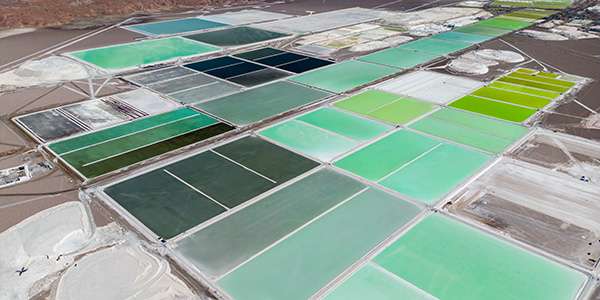For more information on improving the efficiency of your processes, contact our team of filtration experts.
Powering the Future with Cleaner Lithium Production
As global demand for electric vehicles and energy storage surges, the need for efficient, sustainable lithium extraction has never been greater. Pall Corporation delivers cutting-edge filtration and separation technologies that support the production of lithium from brine, helping producers meet environmental and performance goals.
Lithium brines are highly concentrated salt solutions that contain significant amounts of lithium, typically found in underground reservoirs or saline lakes. These brines are extracted and processed to isolate lithium compounds, primarily lithium carbonate and lithium hydroxide, which are essential for various applications, including battery production.
Methods of Lithium Extraction from Brine:
Challenges in Lithium Extraction from Brine
Brine sources—including underground lakes (salars), geothermal reservoirs, and petroleum-associated brines—are increasingly vital for lithium production. These natural sources contain a complex mix of minerals such as iron, magnesium, potassium, calcium, sodium, and lithium. Extracting lithium from brine involves isolating lithium chloride, purifying it, and converting it into battery-grade compounds.
However, manufacturers face several challenges in this process.
Purity Requirements for Lithium-Ion Batteries
Lithium-ion batteries demand extremely high-purity materials. Even trace impurities can degrade battery performance, leading to:
- Reduced driving range
- More frequent charging
- Cold-start issues
- In rare cases, thermal runaway or fire
This makes consistent, high-purity lithium production essential—not only for performance but also for safety.
Variability in Brine Composition
A major issue in lithium from brine operations is the variability in brine composition. The concentration of lithium and the presence of other minerals can fluctuate significantly, making it difficult to maintain consistent product quality. This is especially challenging when compared to more stable sources like lithium extraction from spodumene, where feedstock composition is more predictable.
The Role of Filtration and Separation
Advanced filtration and separation technologies are critical to overcoming these challenges. Pall’s solutions help:
- Improve process reliability
- Ensure consistent high-purity lithium output
- Increase product yield
- Reduce rework and operational costs
These technologies are also essential in downstream applications, such as the production of lithium battery separators, where material purity directly impacts battery safety and efficiency.
The Filtration Expert in Lithium Extraction from Brine
Pall plays a crucial role in lithium extraction. Key locations for the purification of contaminants in lithium brine processing plants are identified below.
Typical Process Flow Sheet for Direct Lithium Extraction (DLE)
Direct Lithium Extraction Filtration Solution
| Filter | Filtration Value | Separation Product |
|---|---|---|
| 1 | Removal of precipitated salts from raw brine – prevent adsorbent bed from contamination | 20 - 40 Micron Filter |
| 2 | Protect RO filtration unit from fouling enabling consistent supply. RO water used to elute captured Lithium from adsorbent bed | 10 Micron Filter |
| 3 | Prevent ingression of impurities into system from injected precipitation chemicals | 1 - 5 Micron Filter |
| 4 | Protect Nano-Filter / RO filter membrane systems or MVR from fouling by carryover solids coming from the filter press | Regenerable Filter |
| 5 | Protect Ion Exchange (IX) and crystallizer from carryover solids coming from the filter press | 1 - 5 Micron Filter |
| 6 | Remove trace solids and Ion Exchange resin fines before the crystallizer | 1 Micron Filter |
| 7 | Prevent ingression of impurities into system from injected Sodium Carbonate solution | 1 - 5 Micron Filter |
| 8, 9 | Recover fine particles of Lithium Carbonate from mother liquor recycle and wash water streams | Regenerable Filter |
| 10 | Protect RO filtration unit from fouling enabling consistent supply. RO water used to rinse final product | 10 Micron Filter |
FAQs
What is lithium from brine?
It’s a method of extracting lithium from salt-rich underground water sources using evaporation or direct lithium extraction technologies.
How are lithium battery separators made?
They are typically made from microporous membranes, and Pall’s filtration systems ensure the purity of the materials used in their production.
What’s the difference between lithium from brine and spodumene?
Brine extraction is more environmentally friendly and cost-effective, while spodumene mining is more established and geographically diverse.
Learn more about the solution that can support your applications or contact an expert today.






